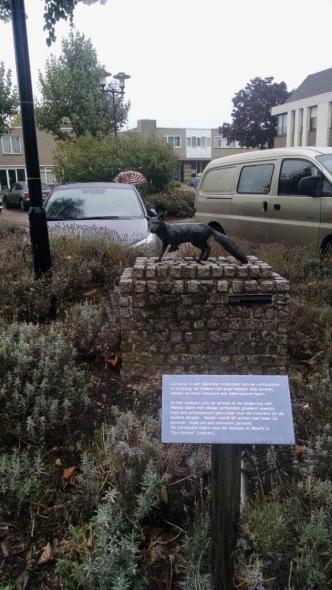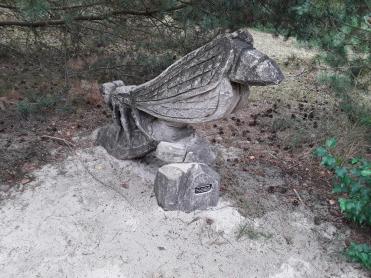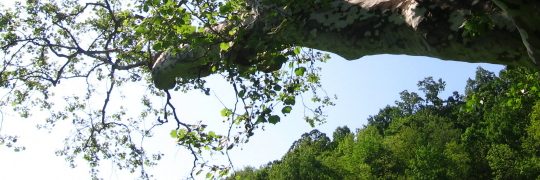Meerlo, Maasduinen, Blerick – Day 6 afternoon
Meerlo is a small village about ten miles north of Venlo. This is where Peter Venhorst, son of Jan Venhorst, innkeeper and apparent bon vivant in Venlo, was appointed burgemeester – mayor – of the district, which included Meerlo, Tienray, Blitterswijk, and Swolgen. He continued serving under the Dutch administration after the defeat of Napoleon, until 1831, and died soon after. Louisa Venhorst, Otto de Gruyter’s mother, grew up there, and married Ferdinand Jan de Gruyter there in 1829.
It was still drizzling when we got there, and the church was not open. We walked around it, and through the graveyard, although I didn’t expect to see any family graves, since in most of Europe land is limited and old gravestones are removed and the space reused.

Sint Johannes de Doper, Meerlo
Sint Johannes de Doper is St. John the Baptist. Something I noticed in the graveyard is that the married couples (marked with an infinity sign ∞ on the stones) had different names. I hadn’t realized it was still the custom, as it was formerly, making genealogy research much easier, since the christening records give both parents’ full names.

“Carnaval is een bijzonder onderdeel van de volkscultuur in Limburg, en tijdens Carnaval hebben vele dorpen, steden en haar inwoners een alternatieve naam. In het verleden zijn de dorpen in de omgeving van Meerlo sterk met elkaar verbonden geweest waarbij men een scheldwoord gebruikte voor de inwoners uit de andere dorpen. Heden wordt dit echter niet meer zoervaren, maar als een erenaam gevoeld.
De Carnavals-naam voor de mensen in Meerlo is “De Vöskes” (vossen).”
This is the fox in the town car park next to the village hall and across from the church. The sign says “Carnival is a special part of folk culture in Limburg, and during Carnival, many villages, towns and its inhabitants have an alternative name. In the past, the villages in the vicinity of Meerlo have been strongly interconnected using a swear word for the residents of the other villages, but today this is no longer boasting, but felt like an honor. The Carnival name for the people in Meerlo is “De Vöskes” (foxes).”
Since we always like to get into the countryside, we went across the Maas to the Nationaal Park De Maasduinen. The Maasduinen – the dunes of the Maas (Meuse) are a long stretch of sand dunes formed by the wind during the last ice age, along the east side of the Maas. The area has heathland, lakes, and forest. We walked along a sluice, across a bridge, along some dunes through the woods, and had hot chocolate in a cafe and visitors center with a lovely water view, built on the dam, and with a sod roof – seen here in the distant from the footbridge.

Maasduinen
There were many tree-stump sculptures along the path through the woods, including this dragonfly.

Our last stop of the day was somewhere special, to me, at least. In my research before the trip, I had found these beautiful old maps of Blerick, a farming community across the river from Venlo. In the upper left corner of this one, made about 1650, is a farm labelled Baesdonck.

Baesdonck at Blerick
Jan Venhorst the innkeeper’s wife was Helena Schoncken. Her father Christian’s family, and her mother Maria deLeuuw’s, had been in Venlo since the available records started. But her mother’s mother, Helena Caniels, was the daughter of Ida Verheijen, daughter of Hendrick Verbaesdonck, later known as Verheijen, born 1629, son of Matthias Verbaesdonck, whose grandfather Wilhelmus, born about 1550, is one of the farthest ancestor I can document in any of my lines, and the oldest I can tie to a specific plot of land. Christening and marriage records still exist.
Verbaesdonck is a farm name, and Matthias later moved to a farm called Ter Heyden (Verheijen) and became known by that name. The farm is one of the few farms still in the area, and is at the intersection of two elevated expressways. The medieval house is still there, but with a modern exterior.
We walked down the lane, now a dead end. It was dusk, and not much to see but the pasture, vegetable fields, and modern greenhouses. But it was good to stand on land I knew my ancestors worked 500 and more years ago.
We went back to dinner in Venlo at a restaurant, Grand Café Bonaparte, whose logo
had captivated Judy that morning. Robert and I had been wanting Indonesian, and had satay, with Venloosch Alt, billed as the Netherlands first Altbier (although altbier originated in Dusseldorf, which is less than 30 miles away).
Something I learned when we visited the Netherlands briefly in our long Europe trip with our children is that saying “deGruyter” the American way is incomprehensible to the Dutch. Here is the Dutch pronunciation:
I still didn’t get it right, I think. I had a conversation with the waitress about why we were in Venlo, and we eventually were writing the name on a napkin – she thought I was saying de Ruijter, a completely different name.
The Wilhelmina in the sunset, and the sunset itself, were lovely.






